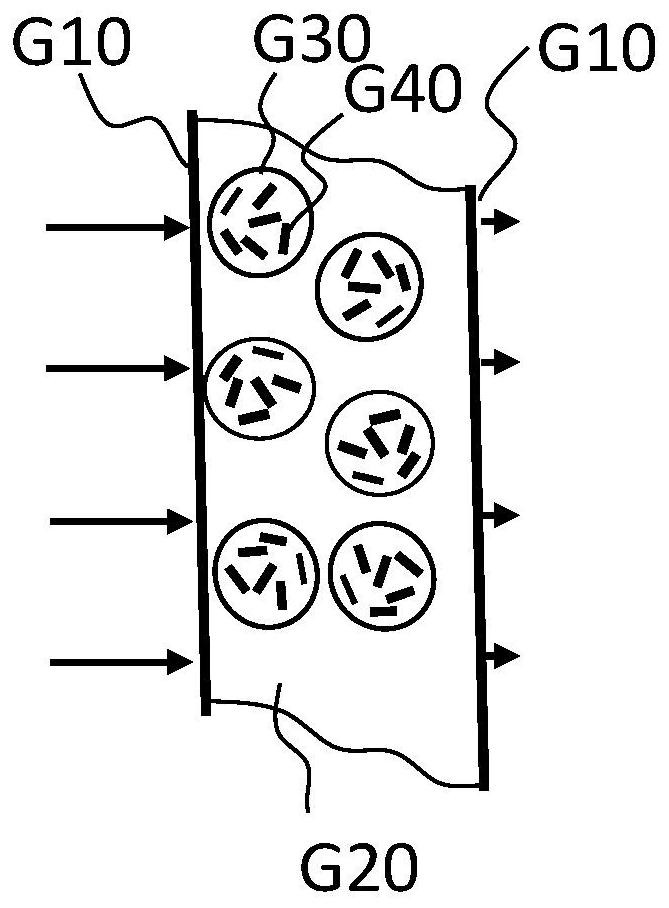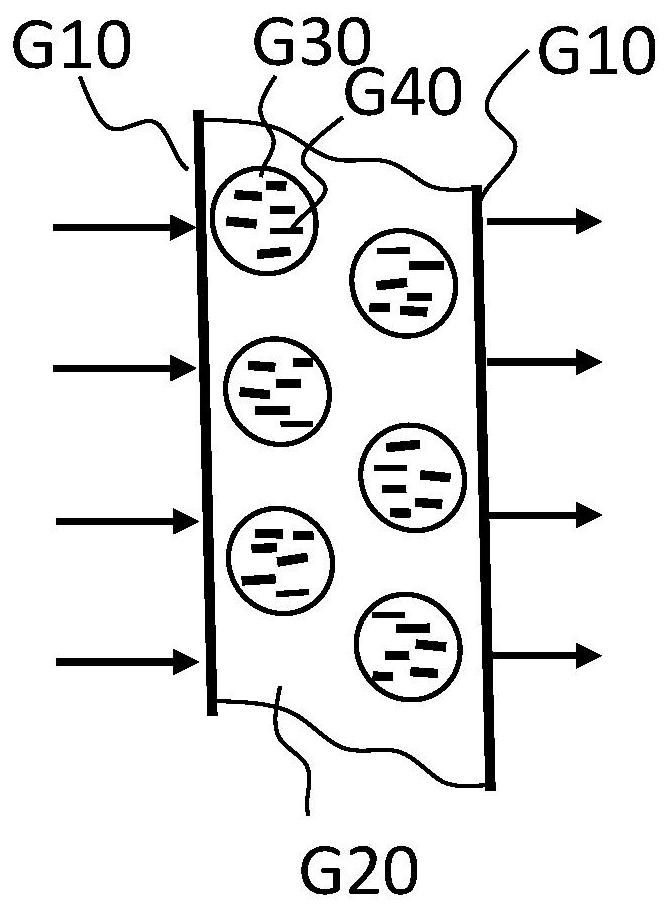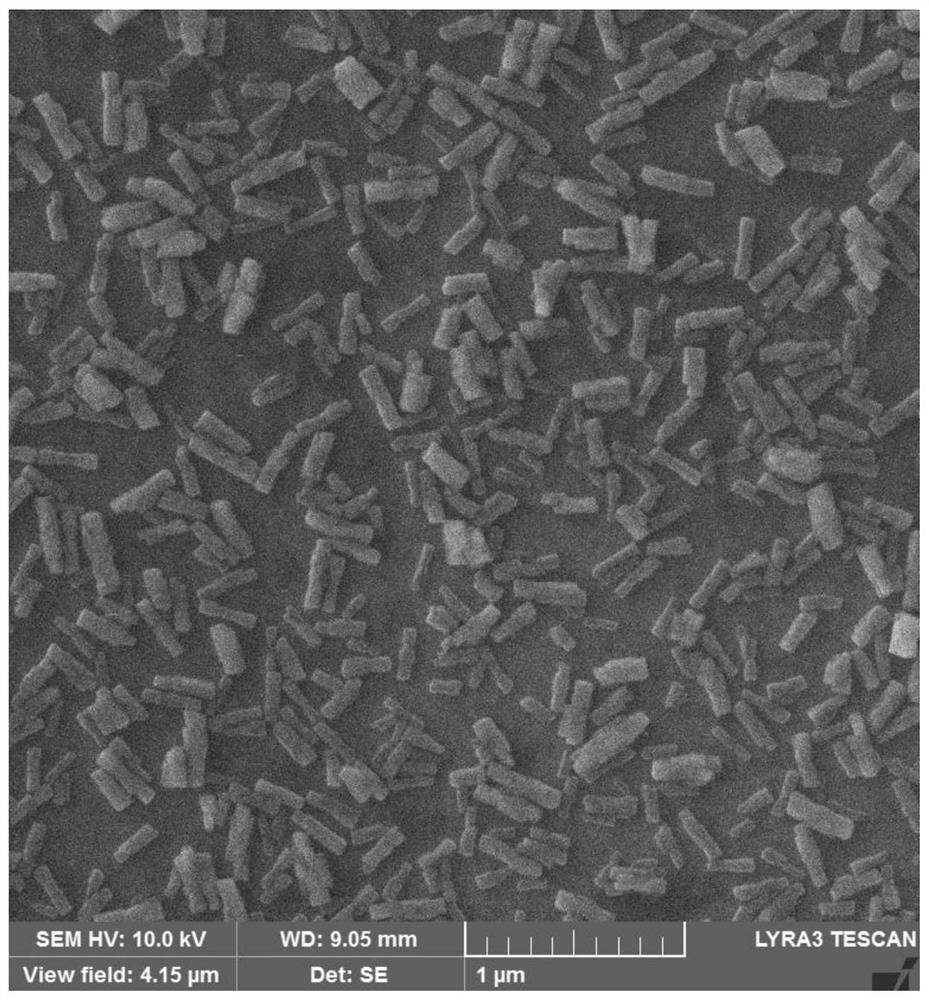Light valve device, light control particle and preparation method of light control particle
A technology of light valves and particles, applied in optics, nonlinear optics, instruments, etc., can solve the problems of monotonous cold color tone and cannot meet the needs of multiple colors, and achieve the effect of enhanced light transmission
- Summary
- Abstract
- Description
- Claims
- Application Information
AI Technical Summary
Problems solved by technology
Method used
Image
Examples
preparation example Construction
[0091] The present invention also provides a method for preparing the above-mentioned solid light-controlling particles, comprising: S1) combining iodine, main group metal iodides, transition metal organic complexes and / or rare earth metal organic complexes, nitrocellulose and organic Mix the solvents, then add low-carbon alcohol, distilled water and nitrogen-containing organic ligands, stir and react to obtain a reaction solution; S2) centrifuge the reaction solution under the condition of not higher than 5000g to obtain a supernatant; S3) The supernatant is centrifuged under the condition of no less than 10000g to obtain solid light-controlling particles.
[0092] Wherein, the present invention does not have special limitation to the source of all raw materials, can be commercially available; Said iodine, main group metal iodide, transition metal organic complex and / or rare earth metal organic complex, nitrocellulose The types and proportions of the nitrogen-containing organ...
Embodiment 1
[0133] Example 1: Preparation of red solid light-controlling particles
[0134] The feeding mass ratio of each raw material is elemental iodine: metal iodide: metal organic complex: nitrogen-containing organic ligand: nitrocellulose is 1:0.5:0.16:0.66:1.
[0135] Add 30 grams of isoamyl acetate solution containing 21.2 wt% nitrocellulose (SS1 / 4S) in a 250 milliliter three-necked round bottom glass flask, 6 grams of I 2 , 70 g isoamyl acetate, 3 g anhydrous CaI 2 , 1 g of ferrocene, and heated to 42 °C. Wait I 2 After dissolution, 6 g of anhydrous methanol and 4 g of 2,5-pyrazinedicarboxylic acid dihydrate were added to a three-necked round-bottomed glass flask. The reaction was heated and stirred at 42° C. for 4 hours, and then cooled naturally.
[0136] The reaction solution was centrifuged at 1350G for 0.5 hour to remove large particulate products. The supernatant was centrifuged at 18000G for 5 hours, and the supernatant was discarded to obtain red solid light-controll...
Embodiment 2
[0139] Example 2: Preparation of gray solid light-controlling particles
[0140] According to the method of embodiment 1, only with 1.0 gram of Co(acac) 2 , instead of 1 g of ferrocene, heated and stirred at 46°C for 2 hours. SEM characterization results show that the gray solid light control particles have a particle length of 328 nm, a particle width of 72 nm, and a particle aspect ratio of 4.5. The resulting suspension of gray solid light control particles is called LCP-2.
PUM
| Property | Measurement | Unit |
|---|---|---|
| Length | aaaaa | aaaaa |
| Thickness | aaaaa | aaaaa |
| Thickness | aaaaa | aaaaa |
Abstract
Description
Claims
Application Information
 Login to View More
Login to View More - R&D
- Intellectual Property
- Life Sciences
- Materials
- Tech Scout
- Unparalleled Data Quality
- Higher Quality Content
- 60% Fewer Hallucinations
Browse by: Latest US Patents, China's latest patents, Technical Efficacy Thesaurus, Application Domain, Technology Topic, Popular Technical Reports.
© 2025 PatSnap. All rights reserved.Legal|Privacy policy|Modern Slavery Act Transparency Statement|Sitemap|About US| Contact US: help@patsnap.com



